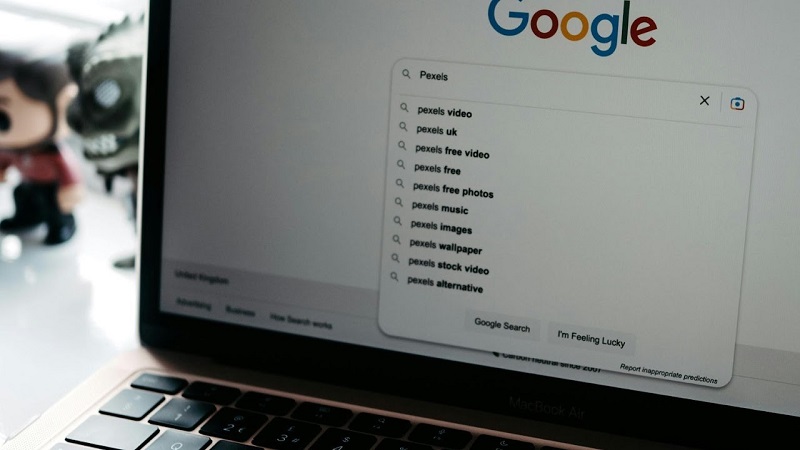Articles and web pages
You may come across different types of journal articles during your studies, including:
1) Online articles found on LibrarySearch or through databases like JSTOR and MLA (via EBSCO). These articles are usually available to read and download as PDFs and include page numbers.
If you want to access databases and search for articles on a topic/text, check the pages:
- Course resource help for English Literature and Creative Writing
- Course resource help for Drama, Theatre and Acting
2) Online journal and magazine articles found via Google / Google Scholar. These may only be published online and may not have page numbers.
3) Print journals - we have a small number of these in the Library including some poetry journals.

Guidance
Authors: In the footnote reference, the author name should be first name followed by surname, e.g. Katharine Craik. The bibliography needs to be arranged alphabetically by author surname, so always reverse the name of the first author in the bibliography reference, e.g. Craik, Katharine. Subsequent authors should be first name followed by surname.
Titles:
- Put the article title in single quotation marks and the journal title in italics.
- The titles of works of literature occurring within article titles should be italicized or placed within double quotation marks, to differentiate. Quotations from literary works which occur as part of the article title should also be enclosed in double quotation marks, as in the example of Saunders.
Page numbers:
- Include page number(s) in the form of ‘pp.’ for ‘pages’, as you would do with book chapters. Note this is part of the new guidance in the latest MHRA Style Guide (4th edn, 2024).
- In footnote references, specify the page cited in the form ‘p.’ for ‘page’
- Where an online journal does not have page numbers and you need to include the location of the passage cited, you can number the paragraphs and include the paragraph cited in round brackets before the URL in your footnote, e.g. (para. 3 of 24). Don't use line numbers as these aren't fixed and stable.
Access details:
- Include the DOI if available - note this is part of the new guidance in the latest MHRA Style Guide (4th edn, 2024). Many online articles have a DOI (Digital Object Identifier) - a unique number for that article. If the article you're citing does have a DOI, you should now include this at the end of the reference preceded by ‘doi:’ (No space between the colon and the number).
You only need to include the doi number, not 'https://doi.org/' which may precede it.
NB There's no need to include the accessed date, as DOIs are regarded as stable links. - You do not need to the name of the database through which you accessed the article, e.g. JSTOR.
- If you're referencing an online-only article without a DOI, you should include the URL in angle brackets <URL> and the date accessed in square brackets [accessed day month year]. An example of this kind of source would be an article from The Conversation website.
Put a full stop at the end of footnote references, but not at the end of bibliography references
For further tips and examples, see the MHRA Style Guide §7.4. Citing Journal Articles (in Chapter 7 'References')
Format and examples
Footnote format: Firstname Lastname, ‘Article Title’, Journal Title, Volume.Issue (Year), pp. x-xx (p. x), doi:.
Online article with no DOI: Firstname Lastname, ‘Article Title’, Journal Title, day month year (para x. of x) <URL> [accessed day month year] .
Footnote examples:
Britta Martens, ‘Dramatic Monologue, Detective Fiction, and the Search for Meaning’, Nineteenth-Century Literature, 66.2 (2011), pp. 195-218 (p. 203), doi:10.1525/ncl.2011.66.2.195.
Graham Saunders, ‘‘‘Out Vile Jelly’’: Sarah Kane's Blasted and Shakespeare's King Lear’, New Theatre Quarterly, 20.1 (2004), pp. 69-78 (p. 71), doi:10.1017/S0266464X03000344.
Emma Smith 'Why we need to remember how to forget', The Conversation, 1 February 2016 (para. 3 of 9) <https://theconversation.com/why-we-need-to-remember-how-to-forget-53526> [accessed 3 June 2024].
__________________________________________
Bibliography format: Lastname, Firstname, ‘Article Title’, Journal Title, Volume.Issue (Year), pp. x-xx, doi:
Bibliography examples:
Martens, Britta, ‘Dramatic Monologue, Detective Fiction, and the Search for Meaning’, Nineteenth-Century Literature, 66.2 (2011), pp. 195-218, doi:10.1525/ncl.2011.66.2.195
Saunders, Graham, ‘‘‘Out Vile Jelly’’: Sarah Kane's Blasted and Shakespeare's King Lear’, New Theatre Quarterly, 20.1 (2004), pp. 69-78, doi:10.1017/S0266464X03000344
Smith, Emma 'Why we need to remember how to forget', The Conversation, 1 February 2016 <https://theconversation.com/why-we-need-to-remember-how-to-forget-53526> [accessed 3 June 2024]
This section covers:
- Online articles found though library databases like Factiva and Lexis+
- Online articles found through a newspaper's own website, for example The Guardian
- Print newspapers

Guidance
Authors: Note that with some newspaper articles, no individual author is credited. Do not use 'Anon.' Instead start the footnote reference with the title of the article. In the bibliography, list the source by article title, ignoring initial definite or indefinite articles.
Titles:
- Put the article title in single quotation marks and the newspaper title in italics.
- The titles of works of literature occurring within article titles should be italicized or placed within double quotation marks, to differentiate. Quotations from literary works which occur as part of the article title should also be enclosed in double quotation marks.
- Initial ‘The’ is normally omitted when citing newspapers, with the exception of The Times.
Date: this should be given between commas, not in brackets, as shown in the examples.
Page numbers and sections:
- Include the section where relevant (e.g. ‘Reviews section’, ‘section G2’)
- Use pp. for the page range of articles where available. Note this is part of the new guidance in the latest MHRA Style Guide (4th edn, 2024). Print articles and many of those found on library database will include page numbers.
- If you're using an article that doesn't have page numbers and you need to include the location of the passage cited, you can number the paragraphs and include the paragraph cited in round brackets before the URL in your footnote, e.g. (para. 2 of 12). Don't use line numbers as these aren't fixed and stable.
Access details:
- Put the URL in angle brackets <URL> and the date accessed in square brackets [accessed day month year].
- If you're using articles found on the database Factiva, these do not have individual URLs, so use the basic URL for the database <https://global-factiva-com.oxfordbrookes.idm.oclc.org> as shown in the examples.
- You do not need to the name of the database through which you accessed the article, e.g. Factiva.
Put a full stop at the end of footnote references, but not at the end of bibliography references.
For further tips and examples, see the MHRA Style Guide §7.6. Citing Newspaper Articles (in Chapter 7 'References')
Format and examples
Footnote format: Firstname Lastname, ‘Article Title’, Newspaper Title, day month year, section, p. x <URL> [accessed day month year].
Footnote examples:
Jackie Kay, ‘Poetry…a Beautiful Renaissance: It's a wonderful time for poetry’, Guardian, 29 January 2011, Saturday comment pages, p. 30 <https://global-factiva-com.oxfordbrookes.idm.oclc.org> [accessed 8 March 2021].
Bryan Hood, ‘Interview: Ursula K Le Guin: ‘I wish we could all live in a big house with unlocked doors’’, Guardian, 18 October 2016, <https://www.theguardian.com/books/2016/oct/18/ursula-k-le-guin-interview-complete-orsinia> [accessed 8 April 2021].
If there is no author:
Footnote format: ‘Article Title’, Newspaper Title, day month year, section, p. x <URL> [accessed day month year].
Footnote example: 'The Life of Charlotte Bronte', The Times, 25 April 1857, p. 9 <https://go-gale-com.oxfordbrookes.idm.oclc.org/> [accessed 8 April 2021].
The bibliography format is the same, except that you omit the full stop.
Bibliography format: Lastname, Firstname, ‘Article Title’, Newspaper Title, day month year, p. x <URL> [accessed day month year]
Bibliography examples:
Kay, Jackie, ‘Poetry…a Beautiful Renaissance: It's a wonderful time for poetry’, Guardian, 29 January 2011, Saturday comment pages, p. 30 <https://global-factiva-com.oxfordbrookes.idm.oclc.org> [accessed 8 March 2021]
Hood, Bryan, ‘Interview: Ursula K Le Guin: ‘I wish we could all live in a big house with unlocked doors’’, Guardian, 18 October 2016 <https://www.theguardian.com/books/2016/oct/18/ursula-k-le-guin-interview-complete-orsinia> [accessed 8 April 2021]
The guidance below covers many types of web sources you may use. If you're unsure about what kind of source you're using, check the website you've found it on to determine:
- Is it a book or book chapter? If so, follow the guidance How to reference books and chapters>
- Is it a journal or newspaper article? If so, follow the guidance for these sources above.
- Is it an audio-visual source? There's specific guidance on how to reference sources like videos viewed online - see How to reference other sources

Guidance
Authors:
- In the footnote reference, the author name should be first name followed by surname. The bibliography needs to be arranged alphabetically by author surname, so always reverse the name of the first author in the bibliography reference.
- If no individual author is credited, you can use the name of the organisation responsible for the web page e.g. The Poetry Book Society, Office for National Statistics.
- If you can't identify an author, whether an individual or organisation, don't use 'Anon.' Instead start the reference with the title of the web page.
Title: Put the title of the page in single quotation marks. You can also include the title of the web page but this should not be in italics.
Date:
- Give as much information as possible. The web site may give a date or a year for when the content was last updated. If this information is not available, use ‘n.d.’ (= no date).
- The date should be given between commas, not in brackets, as shown in the examples.
Access details: You must include the URL and date accessed. Put the URL in angle brackets <URL> and the date accessed in square brackets [accessed day month year].
Sections of web pages: Some web pages may have numbered sections which you can use include in your footnote to help locate a specific part. If there are no numbered sections, you can number the paragraphs and include the paragraph cited in round brackets before the URL in your footnote, e.g. (para. 3 of 24). Don't use line numbers as these aren't fixed and stable.
Put a full stop at the end of footnote references, but not at the end of bibliography references.
Format and examples
Footnote format:
Firstname Lastname, ‘Title of Web page’, Year <URL> [accessed day month year].
OR Firstname Lastname, ‘Title of Web page’, Title of Resource (Year) <URL> [accessed day month year].
Footnote example: Eric Lindstrom, ‘‘Poetry is Not a Luxury’: Audre Lorde and Shelleyan Poetics’, Romantic Circles, 2021 <https://romantic-circles.org/praxis/publicfeeling/praxis.2021.publicfeeling.lindstrom.html> [accessed 3 June 2024].
If author is an organisation:
Office for National Statistics, 'Crime in England and Wales: year ending December 2023', 25 April 2024 <https://www.ons.gov.uk/peoplepopulationandcommunity/crimeandjustice/bulletins/
crimeinenglandandwales/yearendingdecember2023> [accessed 3 June 2024].
__________________________________________
Bibliography format:
Lastname, Firstname, ‘Title of Web page’, Year <URL> [accessed day month year]
OR Lastname, Firstname, ‘Title of Web page’, Title of Resource (Year) <URL> [accessed day month year]
Bibliography example: Lindstrom, Eric, ‘‘Poetry is Not a Luxury’: Audre Lorde and Shelleyan Poetics’, Romantic Circles, 2021 <https://romantic-circles.org/praxis/publicfeeling/praxis.2021.publicfeeling.lindstrom.html> [accessed 3 June 2024]
See MHRA Style Guide §7.5. Citing Websites and Social Media (in Chapter 7 'References')
